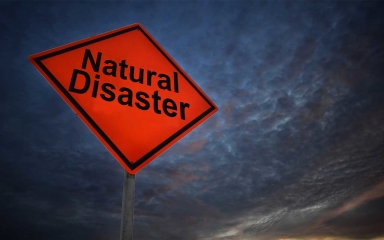Maximizing Business Tax Losses after a Disaster by Keith VanHoy, CPA

Disasters can be devastating to your business resulting in reductions or suspensions of cash flow. With the interruptions in operations, the last thing on your mind may be your tax situation. However, working with your accountant now can save you tax headaches later and help add money to your business through timely and increased refunds.
WHAT IS A BUSINESS DISASTER LOSS?
A business disaster loss is interchangeable with other terms such as “casualty loss”. A disaster loss must sudden, unexpected, and unusual. Losses include fire, flood, earthquake, tornados, hurricanes and many other events that fall into the same category. A business does not need a presidentially declared disaster to claim a tax deduction. Disaster losses for individuals fall under different rules for deductibility so it’s important to differentiate between a business and personal loss.
HOW IS THE LOSS CALCULATED?
A casualty loss allows you to deduct an amount equal to the decline in the property’s value up to the property’s adjusted basis. So what is the adjusted basis?
Adjusted basis = Original Cost + improvements – deductions (such as depreciation included Section 179 and bonus depreciation)
Because of the favorable depreciation rules for personal property, most personal property would have zero basis and the disaster loss deduction would be zero.
For buildings and other assets that aren’t immediately depreciable through bonus depreciation or Section 179 depreciation, you are more likely to have an adjusted basis remaining in the property.
Once you know your adjusted basis, your next step is to factor in your insurance reimbursements. The IRS has a Publication 584-B which is workbook to help you track your loss property and calculate the deduction. Your accountant can partner with you to complete the workbook and figure your eligible loss.
For a total loss
Adjusted basis – insurance reimbursements = deductible loss
You aren’t required to file an insurance claim to receive a business casualty loss unlike personal casualty losses.
For a partial loss
Your loss is the lessor of
The decrease in the property’s fair market value immediately after the event or
The property’s adjusted basis
You must reduce either by the amount of insurance proceeds you have received or expect to receive.
To determine the decline in the property’s fair market value you can either use an appraisal by a qualified appraiser or the cost of repairs. The cost of repairs is not the casualty loss as it’s only used as evidence of the property’s decline in FMV. There are also several factors that limit your use of the cost of repairs as a way to determine the decline in FMV. These factors should be discussed with your accountant to determine whether the cost of repairs will fit your situation or if an appraisal will be required.
WHEN CAN I CLAIM THE LOSS?
The casualty loss can be claimed in the year it was incurred. If the loss was a federally declared disaster, you have the option of claiming the loss in the prior year. This may be advantageous to speed up the collection of a refund or to use the loss in a year you were in a higher tax bracket.
If your loss exceeds your income for the current year, you will have a net operating loss (NOL) and be eligible to carry the loss forward to future years.
WHAT IF MY INSURANCE PROCEEDS EXCEED MY LOSS?
If your insurance reimbursement exceeds your adjusted basis in the property, you have a taxable casualty gain. This is common for personal property that has no adjusted basis due to depreciation taken in prior years. For personal property, the gain is reported as ordinary income, not capital gain income.
IS THERE A WAY TO DEFER THE GAIN?
Yes! The IRS has involuntary conversion rules that allow you to purchase replacement property with equal or greater value. The property must be “similar or related” to the replacement property to qualify. The replacement property’s cost is reduced by the amount of the casualty gain that would have been recognized. If the loss is not due to a federal disaster, you have two years after the close of the first taxable year to purchase the property. If the loss is due to a federal declared disaster, you have four years to purchase replacement property and any business property will qualify.
WHAT ABOUT REPAIRS?
Repairs aren’t part of the casualty loss deduction. They can be used to help determine the decline in fair market value as mentioned above. You are not allowed to take a casualty loss and deduct the repairs. Instead, repairs must be capitalized and added to the property’s basis. For personal property, the repairs can then be subject to immediate expensing under the Section 179 or Bonus depreciation rules. For real property, the repairs would be added to the building’s basis and depreciated over the useful life, as long as 39 years for commercial property.
The casualty loss deduction can be large and complex. Working with your accountant through the steps of calculating your loss can help you maximize your loss for tax purposes and realize a larger and quicker tax refund.
